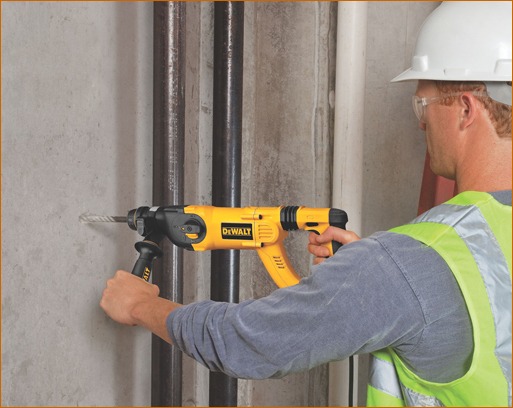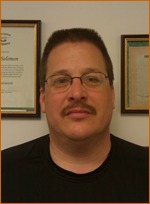Safety
The Business of Incorporating Safety

Construction workers incur the most fatalities of any industry in the private sector, according to the Bureau of Labor Statistics’ 2008 Census of Fatal Occupational Injuries Summary findings. The number of deaths on the jobsite has decreased slightly, but only due to the enormous loss of jobs in the construction industry.
Keeping employees safe is a daily struggle. Aside from the billions spent in association with injuries, the cost of a human life cannot be measured. The good news is that most work-related injuries and illnesses are preventable. Safety training, the use of fall protection, and the incorporation of hazard communication are paramount on the jobsite. You want your workers to be productive, but also you need them healthy.
Masonry spoke to three key players in our industry to measure the importance of safety to varying companies, and to learn how their approaches are alike and different. Eric Bernstein, director of commercial products, DEWALT; Mark Michaels, director of product management, Husqvarna Construction Products North America; and Michael D. Solomon, national sales manager, PREMIER SCAFFOLD SOLUTIONS and TNT Equipment Co. gave us the following insight to the effect of safety issues on masonry industry companies.
 |
|
| Michael D. Solomon |
Solomon: Safety is job No. 1. Not only for cost reasons but, more importantly, being safe in manufacturing as well as on jobsites makes it a win-win for all involved.
Michaels: Safety is of paramount importance in the design of Husqvarna products. There are four basic levels of safety addressed in product design and sales:
- Compliance
- New safety features
- Ergonomics
- Education.
The combined effect is a thoroughly tested product, which meets or exceeds all safety requirements for a particular market with complete operator’s manuals and warnings.??Husqvarna is an industry leader in safety features and new advancements and supports operator training and educational opportunities to ensure our products are used to the best of their ability.??The intended result is a more productive and satisfied customer with lower operation costs, including reduced downtime for injuries and lower insurance or liability costs. Many of the injuries associated with construction products are due simply to the nature of the work. Falls and back injuries are typical injuries occurring on construction sites, many of these are believed to be linked to fatigue. Husqvarna believes that designing more productive, maneuverable and lighter weight equipment with less noise and vibration can reduce the fatigue that causes some injuries. Ergonomics is, therefore, a key component of the Husqvarna design.
Bernstein: In DEWALT product development, improving end-user safety is a top priority. Our product managers and engineers spend countless hours on jobsites watching how end-users perform their applications, and looking for ways to make their jobs safer. We strongly believe that if we can provide the safest tools in the industry, we will continue to grow our market share with the heavy-commercial and industrial end-user.
We’ve identified a number of opportunities to increase the safety of our end-users. The two primary areas revolve around tool control and vibration reduction in hammers and grinders.
Solomon: PSS is now making the Pro Series mast climber platform 100 percent in America. We are bringing not only a safer piece of equipment to the market place, but one with many advantages over our competition. PSS and our sister company, TNT Equipment, are always looking for ways to make our companies safer. Our company has a safety program in place where our skilled workers all have 10-hour and 30-hour OSHA training cards.
 |
|
| Mark Michaels |
Michaels: We’ve recently introduced two new electric products that exemplify the advancements in user comfort, productivity and safety. A new high-frequency wall saw, model WS 482 HF, can replace former hydraulic units with many features that could improve safety. The saw head, which must first be carried to the site and then lifted to put on a track, is less than half the weight of most older units in use today. Lighter and fewer electric cords replace numerous, heavier hydraulic lines. The saw is operated by remote control, putting the operator at a safer distance and optimum position to control the cutting. New, silent core blade technology reduces the noise of the blade. Noise has been identified as a leading cause of fatigue. Another new product line [consists of] the DXR 310 and DXR 250 demolition robots. Like the WS 482 wall saw, these robots are powered with quiet electricity and are remote controlled. The no-emission electrical motor allows for indoor operation. All of these features lead to operator comfort, productivity and safety.
 |
|
| Eric Bernstein |
Bernstein: Vibration is a key area that DEWALT has focused on for rotary hammers. Historically, professional contractors expect their rotary and demolition hammers to vibrate heavily – usually stating that the more it vibrates the harder the tool is hitting. Many users complain that the vibration causes early fatigue and tingling in their hands.??To address these concerns, DEWALT has applied SHOCKS Active Vibration Control to every range of hammers in its line, including 1-inch SDS Hammers, Cordless SDS Hammers, SDS Max Hammers, Chipping Hammers, Demolition Hammers, and the Breaker Hammer.??SHOCKS Active Vibration Control takes more than half of the vibration out of the tool, leading to a more comfortable drilling and demolition experience for the operator. DEWALT has the widest range of low-vibrating hammers on the market today.
DEWALT has developed several features to better assist the user in increasing their control of the tool.??A common issue in drilling with a rotary hammer is being able to maintain control of the product when the bit hits rebar.??This tends to make the drill itself spin out of the user’s hands. DEWALT recently introduced CTC (Complete Torque Control) on a number of its SDS Max Hammers to help with this issue.??CTC utilizes a DEWALT exclusive, two-stage clutch for maximum control in bind-up situations.
DEWALT’s CTC has two torque settings: 60 foot-pounds (like most hammers on the market today), and 30 foot-pounds. When the hammer is powered on, the system automatically defaults to the low-torque setting (30 foot-pounds).??This setting has enough torque for roughly 90 percent of the user’s applications. When the user needs more torque, he simply moves the CTC knob to position #2, and it operates like any other SDS Max rotary hammer. When the unit is un-plugged and plugged back in, the system automatically defaults to setting #1, the low-torque setting. When a user hits rebar in this setting, the tool is extremely easy to hold on to, and the hammer is less likely to spin out of his hands.
Control is just as important on a grinder, especially in cutting applications when the wheel can experience bind-up in the material.??DEWALT’s exclusive E-Clutch technology (found in its line of high-performance grinders) shuts the grinder off during a sudden stall caused by pinching. This feature reduces the risk of kickback to the user.
Also included in the high-performance line of grinders is DEWALT’s trademarked Power Loss Reset function. This feature prevents accidental re-starts following a disruption of power when the switch is locked-on or in the “on” position. The grinder will only restart after the switch is cycled.
Solomon: We recently got approved in a new training program (MSHA), which is in the mining industry for which we have our equipment in a unique set up. PSS and TNT also have a hazard awareness program.
Michaels: Husqvarna trains several hundred employees, distributor sales people and end users with a variety of training programs. We employ full-time trainers for the sales organization and distributors. For our more sophisticated equipment, we offer and sometimes require training with every newly commissioned piece of equipment to assure the operator is properly trained in the proper use of the machine.
Solomon: Anything that creates a safer environment in manufacturing is always a solid investment. When you have safety guidelines in place as well as trained and knowledgeable employees, the outcome is better – not only better for us, but for the end-user.
Michaels: Husqvarna is both a factory and distributor. For manufacturing, Husqvarna has a global factory program, SAW (Safety At Work) and has recently introduced another program, HOS (Husqvarna Operating System), which sets forth specific goals and procedures for each location to increase safety.??On the distribution and sales side, we carry gloves, helmets, and eye and ear protection in our product line; provide training; and require our people to wear the appropriate safety apparel when on a jobsite or using equipment. If our customer doesn’t see us using it, we can’t expect them to view us as the authority on the subject.
| ??Safety Tips for the Mast Climbing Work Platform?? |
The Mast Climbing Work Platform is a tool of the trade primarily used to position personnel, along with their necessary tools and materials, to perform their work. The major causes of injury/fatality include lack of training*, improper use, falls, inadequate guardrail protection, collapses, improper planking and inadequate inspection.
*???? ??For guidance on training contact the manufacturer. For additional guidance on training, refer to ANSI A92.9, OSHA Regulations, or the IPAF/SIA US Mast Climbing Work Platform Safe Use Guidelines. Courtesy of OSHA Alliance Program and Scaffold Industry Association. |